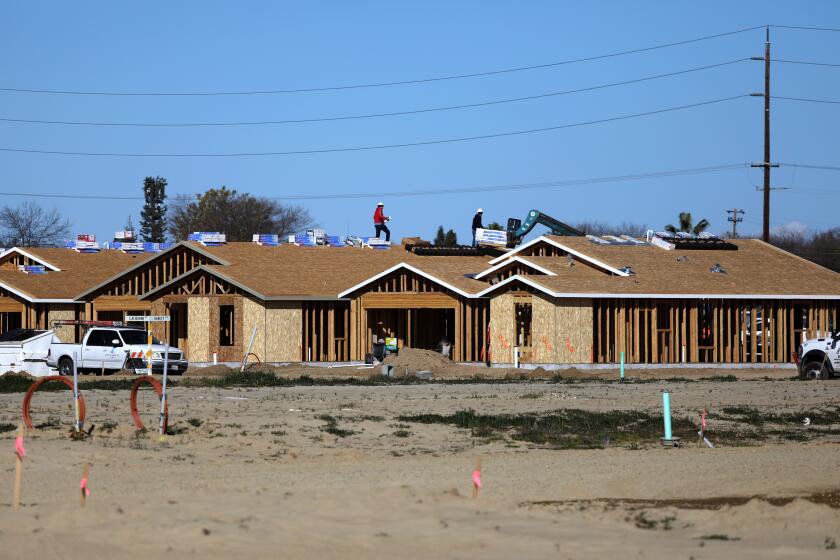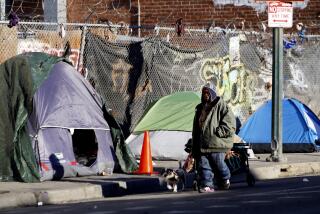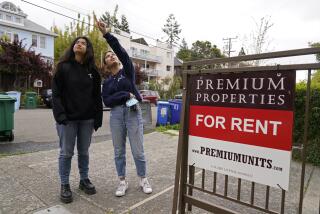Renters dominate California — but they are struggling to survive
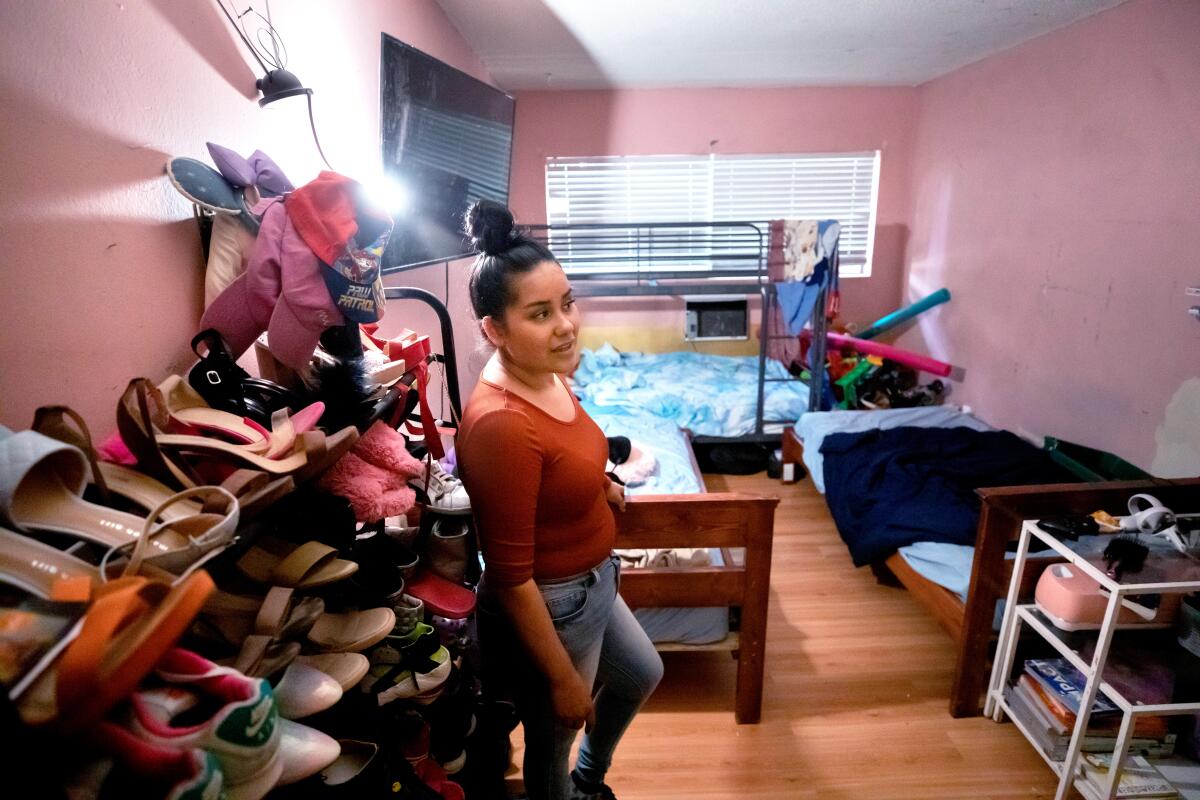
Evelyn Arceo holds down a full-time job as a baker at Universal Studios Hollywood, earning $19 an hour. But even when she gets a few hours of overtime at the theme park, the single mother of four can barely afford the rent of her one-bedroom apartment in Panorama City.
On her salary, buying a home is out of the question.
Already, her monthly rent of $1,300 is “just too expensive at this point,” Arceo said, with late fees of $40 to $50 compounding her financial plight. “I don’t think I’ve ever been on time on my rent.”
Arceo’s situation is common in California, which is among the nation’s leaders in renter-occupied housing. In the Golden State, 45.5% of housing units were occupied by renters in 2020, a small increase from the 44% rate in 2010, according to newly released data by the U.S. Census Bureau.
California was second only to New York, where 49.7% of the housing units are renter occupied. The District of Columbia was an outlier, at 61.7%.
Nationwide, the rate of renter-occupied housing units — 36.9% — is at its highest point since 1970.
“The growth of renter-occupied units continues to outpace the growth of owner-occupied units,” the Census Bureau said in a statement.
The states with the lowest renter rate — and therefore the highest owner-occupied rates — were West Virginia, at 27.4%, and Maine, at 28.9%.
Hans Johnson, a demographer at the Public Policy Institute of California, said the new data were “not shocking.” California’s high rate of renters can be attributed mostly to “the high cost of housing,” Johnson said.
The annual income needed to buy a home in Los Angeles rose last year beyond $220,000, according to a study by the residential real estate firm Redfin. With higher mortgage interest rates and inflation cutting into household incomes, the ability to own a home is increasingly out of reach for residents in Los Angeles, where the median annual household income in 2020 was just over $65,000.
High housing costs are also a factor in putting California near the bottom in another category: the rate of single-occupancy households.
New data from the Census Bureau show that more than a quarter of all households in America — 27.6% — had just one occupant in 2020. The rate of solo occupancy is more than three times the recorded level in 1940, 7.7%.
A Times analysis found that California ranked 49th of the 50 states in the rate of single-occupant dwellings, with 23% of households occupied by just one person — a rate that has remained steady for about 20 years. Only Utah had a lower rate, at 20%.
North Dakota had the highest rate of single occupancy, 32.8%. The District of Columbia’s rate was an astronomical 43.7%.
In states other than California, “where rents are much lower or the opportunity to buy a house is better, it’s not as difficult for a single worker” to live alone, Johnson said.
Another factor is California having a “larger immigrant population than in the rest of the U.S.,” according to Johnson. “It is more common for immigrant families to live in multigenerational households,” he said.
Utah has the lowest rate of single-occupant homes because the state has a high marriage rate and an uncommonly high number of children per household, Johnson said. He attributed those trends partially to Mormon residents, who make up well over half of the state’s population.
The increase in people living alone coincides with higher social isolation, a worrying trend outlined by U.S. Surgeon Gen. Dr. Vivek Murthy in a recent report.
“Our epidemic of loneliness and isolation has been an underappreciated public health crisis that has harmed individual and societal health. Our relationships are a source of healing and well-being hiding in plain sight — one that can help us live healthier, more fulfilled and more productive lives,” Murthy said.
The state’s major cities lost people between 2020 and 2022, especially in Northern California. But exurban boomtowns, including some Southern California areas, saw gains.
Such isolation increases the risk of premature death by more than 60% and includes higher risks of heart disease, stroke and dementia, according to the report.
To counter the increased isolation, “communities must design environments that promote connection,” the report said, and “invest in institutions that bring people together.”
While more Americans are living alone, Arceo, 32, worries about providing her children a home where they can enjoy some space for themselves.
With a 14-year-old son in the throes of adolescence and a 12-year-old son entering that stage, “they need their privacy,” she said.
“It’s insane to say that I work for this company and can’t afford to give my kids a proper living,” Arceo said.
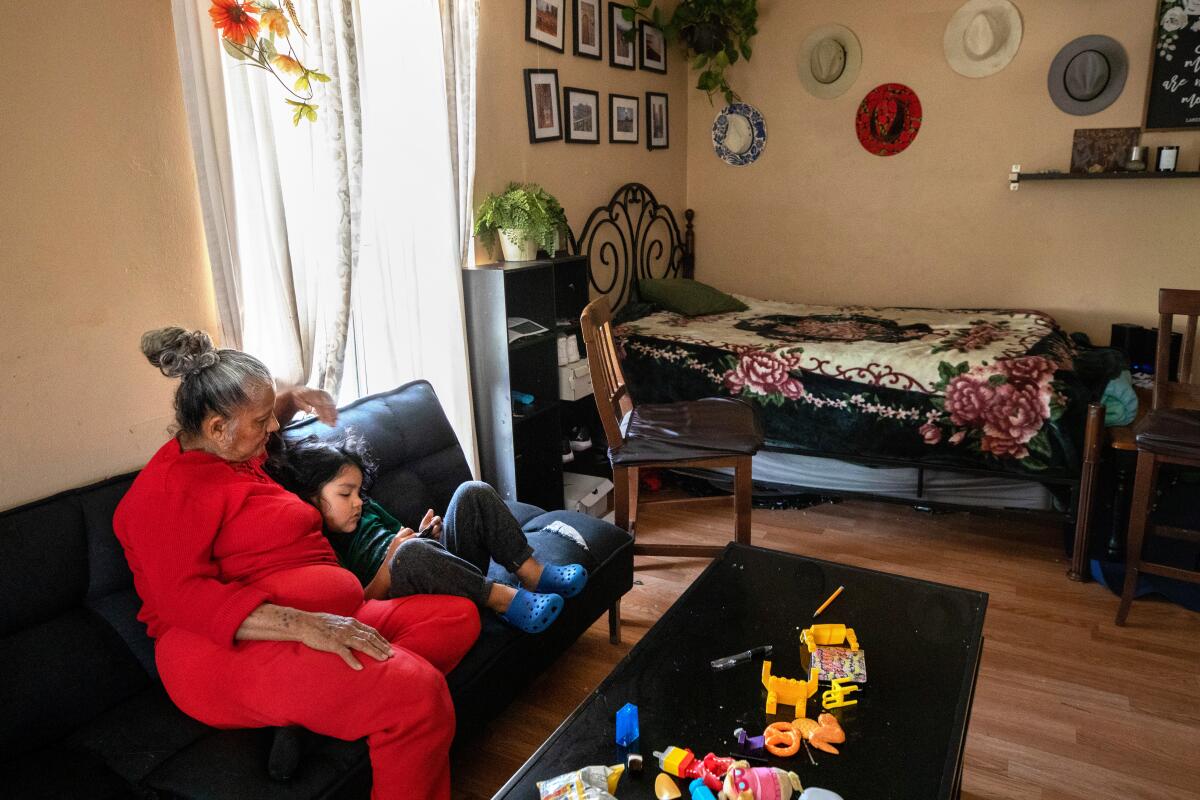
She has worked as a baker for the theme park for eight years, but Arceo notes that “I was homeless for the first year working at Universal,” when she was forced to live with her then-three children in hotels, friends’ homes, wherever they could.
With the bakery short-staffed, she has recently picked up “at least an hour of overtime a day,” but it hasn’t been enough, forcing her “to choose whether I pay my car insurance or my rent,” she said.
California’s population continued to shrink last year, but it built housing at a pace not seen since 2008, according to a state Department of Finance report.
Johnson, the demographer, pointed to possible hope on the horizon. He noted that California has reported a steady decline in population since 2020 — starting at the beginning of the pandemic. The drop has coincided with the construction of more housing, primarily in the state’s suburbs and exurbs.
“If California continues to lose people and build housing, at some point it should make a dent in the housing deficit.”
A construction surge is not likely to make enough of a difference to change the conditions for low-wage workers like Arceo.
Looking to the future, she doesn’t see many options.
“I can’t afford to move,” she said.
More to Read
Sign up for Essential California
The most important California stories and recommendations in your inbox every morning.
You may occasionally receive promotional content from the Los Angeles Times.


